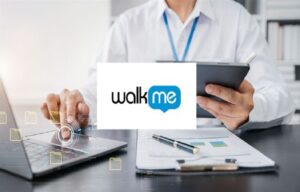AccessiBe Offers Insights on Improving Web Accessibility for Users Who Are Visually Impaired

Web accessibility is focused on enabling people with disabilities to understand, navigate and navigate online content. As a large number of online experiences are inherently visual, web is fraught with sites and apps that are not unusable for people with vision impairments. It is important that developers switch up their games and incorporate designs that offer assistance and ease of use for those who have a vision impairment. This is where companies like AccessiBe can be of a huge help. They offer solutions to suit many different user preferences and accessibility needs, including screen reader interface options for blind users.
AccessiBe briefly discusses the aspect of making websites more accessible for visually impaired users
A lot of blind individuals use screen readers to access online content. A screen reader is a type of assistive technology. This software program facilitates blind web users to “read” the content of page either the help of either a speech synthesizer or a Braille display. The screen readers appear to be an interface between the OS of a computer and the user. Screen readers ideally have the capacity to embrace single lines and words, read various text combinations, or read complete sections of a text. One can even use it to understand the location of the cursor, spell words, and more.
Screen reader interface options, therefore are extremely important for websites. A number of specific design considerations have to additionally be considered to ease the web experience of a visually impaired user, such as:
- Hierarchical structure: Diverse screen readers tend to highlight a list of headings, subheadings and the structural markers of the page. It allows screen reader users and the keyboard navigating users to try varying sections of the page, and put emphasis on its other essential elements.
- Keyboard functionality: While not all, but there are certain users with vision impairment who can use a mouse or a track-pad physically, but are unable to see the cursor of the mouse. Hence, most of them do prefer using keywords for navigating web pages. Hence, developers must see to it that their web content permits keyboard navigation.
- User feedback: Screen reader users typically want immediate feedback after performing a command. They must be well informed while filling up a form, opening a new tab, or expanding content with a screen reader. Therefore, developers should not forget to use the right tools in their design to provide feedback that a screen reader user can listen to.
- Keep contrast sensitivity in mind: People with vision impairments like glaucoma, diabetic retinopathy, and cataract typically have low color contrast sensitivity. Therefore, when designing web pages, it becomes vital to have a high contrast between the foreground and background.
- Right rules, labels, and values: Custom controls do not clutch any native semantic parts. Hence, it is imperative to have proper HTML roles, values, and labels that change when required. Screen readers would let the users know what a widget is and how it works with such roles and labels.
Website designing taking web accessibility into consideration is an important responsibility. To make things easier, developers can always choose to avail the solutions offered by companies like AccessiBe in order to create websites that are orderly accessible for people with vision impairment.







